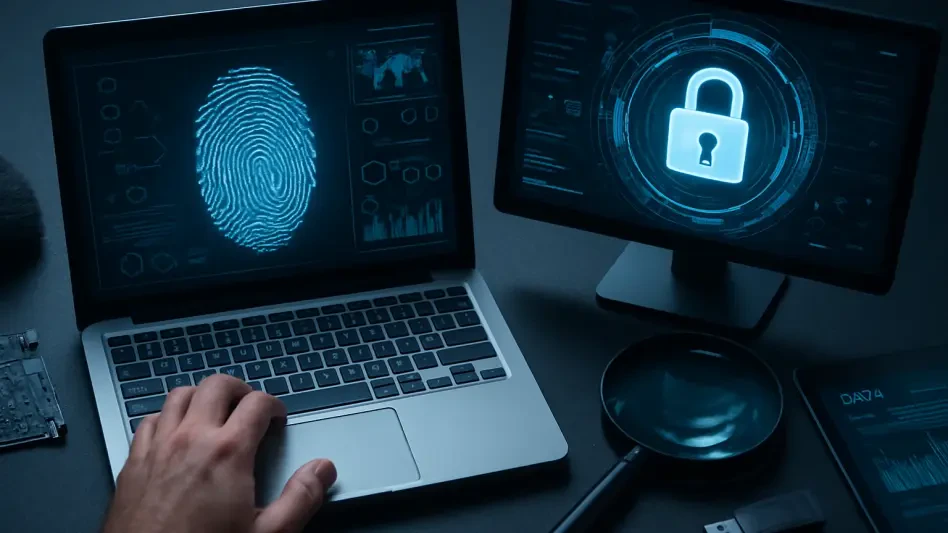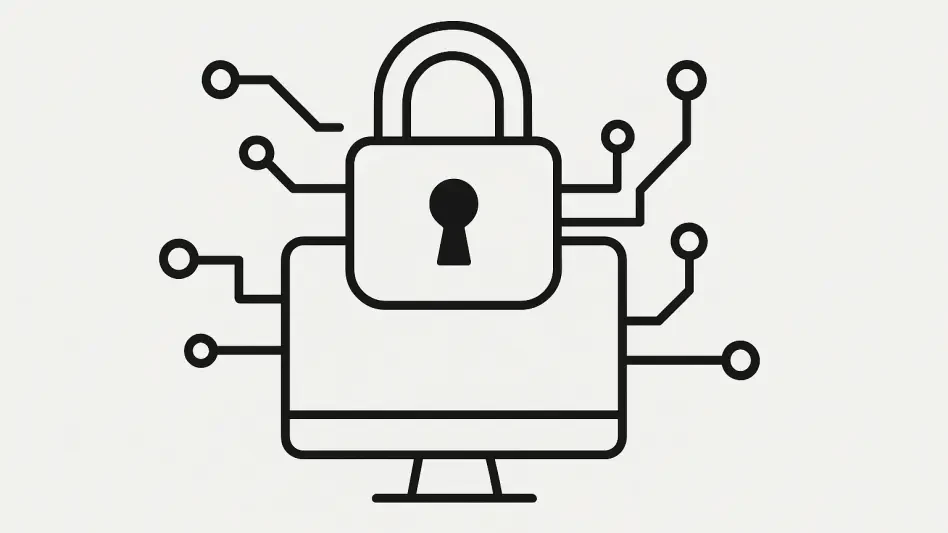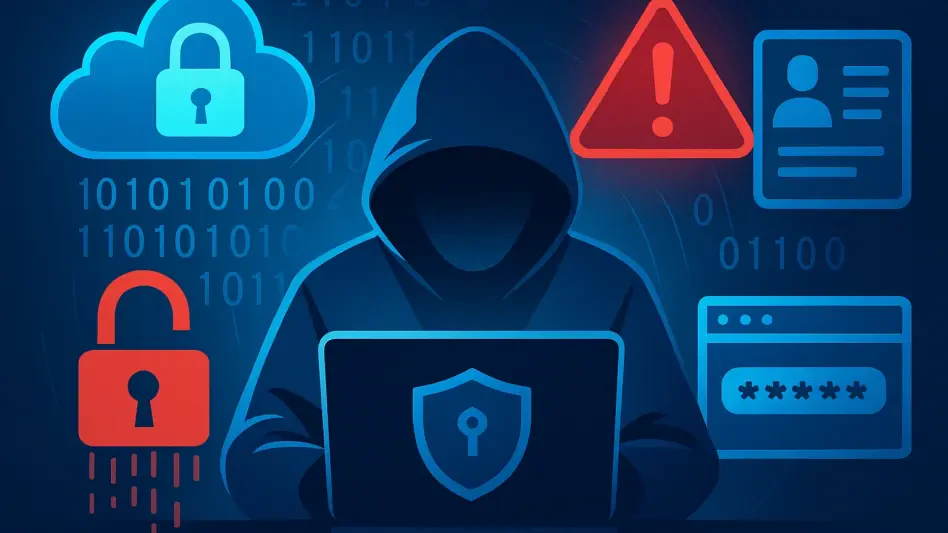Imagine a world where a single cyberattack can cripple an entire region’s digital infrastructure, leaving law enforcement scrambling to trace the culprits through a maze of encrypted data and hidden transactions. This is the stark reality of modern cybercrime, where the stakes are higher than ever, and the urgent need for advanced investigative tools has become absolutely paramount. Cyber forensic technology has emerged as a critical weapon in this battle, offering sophisticated solutions to uncover digital evidence and combat threats. This review delves into the core capabilities, recent advancements, and real-world impact of this technology, with a spotlight on initiatives like India’s National Cyber Forensic Laboratory (NCFL) – North East.
Core Features of Cyber Forensic Systems
Mobile and Network Forensics
Cyber forensic technology excels in extracting vital information from mobile devices and communication networks, a capability that has become indispensable in solving digital crimes. By tracing digital footprints and recovering deleted data, these systems can reconstruct timelines of criminal activity, often providing the missing link in complex investigations. Law enforcement agencies rely on such tools to pinpoint suspects through call logs, messages, and app data, even when perpetrators attempt to cover their tracks.
The significance of mobile and network forensics extends beyond individual cases to broader cybersecurity threats. These tools enable analysts to map out patterns of cyberattacks, such as phishing schemes or malware distribution, by analyzing network traffic and device interactions. As cybercrimes grow in sophistication, the ability to dissect these digital pathways remains a cornerstone of effective forensic analysis.
Damaged Media Data Recovery
Another pivotal feature of cyber forensic technology lies in its ability to recover data from damaged or corrupted media, such as hard drives, USBs, or memory cards. Specialized software and hardware solutions can reconstruct fragmented files or bypass physical damage, ensuring that critical evidence isn’t lost to technical failures. This capability often proves decisive in cases where storage devices have been intentionally sabotaged to conceal incriminating information.
The impact of data recovery on criminal investigations cannot be overstated, as it allows investigators to access seemingly irretrievable content, like deleted emails or hidden documents. Such techniques have been instrumental in high-profile cases involving data breaches or espionage, where every byte of information can shift the direction of an inquiry. The constant evolution of storage technologies, however, demands ongoing innovation in recovery methods to keep pace with new challenges.
Open Source Intelligence (OSINT) Tools
Open Source Intelligence, or OSINT, represents a powerful component of cyber forensic systems by leveraging publicly available data for investigative purposes. These tools scour social media platforms, public records, and online forums to gather actionable insights, often revealing connections or activities that suspects aim to hide. This approach has become a vital resource for law enforcement in tracking cyber threats without invasive measures.
Beyond mere data collection, OSINT tools help build comprehensive profiles of individuals or groups involved in illicit activities by correlating disparate pieces of information. Their accessibility and efficiency make them particularly valuable in resource-constrained environments, where traditional surveillance might be impractical. As online spaces continue to expand, the role of OSINT in digital forensics is set to grow even further.
Cryptocurrency Investigation Capabilities
With the rise of digital currencies, cyber forensic technology has adapted to address crimes tied to cryptocurrencies, such as fraud and money laundering. Specialized tools can trace transactions on blockchain networks, identifying wallet addresses and linking them to real-world identities despite the anonymity these systems promise. This feature has become crucial in tackling financial crimes in the digital age.
The ability to follow the flow of illicit funds through complex cryptocurrency exchanges offers law enforcement a significant edge. Cases involving ransomware payments or dark web transactions often hinge on these forensic capabilities to dismantle criminal networks. As digital currencies evolve, the demand for refined investigative tools in this domain will only intensify, pushing the boundaries of forensic innovation.
Recent Developments in Cyber Forensics
The landscape of cyber forensic technology is witnessing rapid advancements, driven by the urgent need to counter evolving threats. One notable milestone is the establishment of regional hubs like India’s NCFL – North East in Assam, a state-of-the-art facility inaugurated to bolster digital investigation in the northeastern region. This lab, built with substantial investment, reflects a growing recognition of localized infrastructure as essential for addressing area-specific cyber risks.
Emerging trends also point to the integration of artificial intelligence in forensic processes, enhancing the speed and accuracy of data analysis. AI-driven algorithms can now sift through vast datasets to identify patterns or anomalies that human analysts might overlook, marking a transformative shift in the field. From this year onward, the focus on such technologies is expected to shape forensic capabilities through at least the next few years.
Additionally, there is a clear emphasis on capacity building, with facilities like NCFL – North East serving not just as operational centers but also as training grounds for law enforcement. These hubs equip officials with cutting-edge skills to handle sophisticated cybercrimes, ensuring that regional forces are not left behind in the digital arms race. Such developments signify a strategic pivot toward proactive cybersecurity measures on a global scale.
Real-World Applications of Cyber Forensic Technology
Cyber forensic technology finds practical deployment across diverse sectors, most notably in law enforcement, where it tackles issues like cyber fraud, hacking, and digital espionage. Facilities such as NCFL – North East play a pivotal role by providing advanced tools to police forces across India’s northeastern states, enabling them to address crimes that transcend local boundaries. This regional focus ensures that even remote areas have access to top-tier investigative resources.
Unique applications also include specialized training programs for officials, which are designed to bridge knowledge gaps in handling digital evidence. These initiatives, often hosted at dedicated centers, empower law enforcement to stay ahead of cybercriminals who exploit technological advancements. The operational support for complex cases, such as cryptocurrency investigations, further underscores the technology’s versatility in real-world scenarios.
Beyond traditional crime-solving, cyber forensic systems contribute to national security by uncovering digital espionage or state-sponsored cyberattacks. By analyzing malware signatures or network intrusions, these tools help safeguard critical infrastructure from covert threats. Their multifaceted utility highlights why investment in such technology remains a priority for governments worldwide.
Challenges and Limitations in Cyber Forensics
Despite its advancements, cyber forensic technology faces significant hurdles, primarily due to the relentless pace of cyber threats. Criminals continuously develop new methods to obscure their activities, such as using advanced encryption or anonymizing tools, which can outstrip the capabilities of existing forensic systems. Keeping up with these tactics requires constant updates and innovation, often straining resources.
Technical complexities in data recovery also pose a persistent challenge, as modern devices and storage solutions become increasingly intricate. Extracting evidence without compromising its integrity demands high expertise and specialized equipment, which may not always be available in underfunded regions. Regulatory issues further complicate matters, as legal frameworks for handling digital evidence vary widely and can delay investigations.
Efforts to address these limitations are underway, with investments in training programs and infrastructure development gaining momentum. Governments and private sectors are collaborating to standardize protocols and enhance accessibility to forensic tools. While progress is evident, overcoming these obstacles remains an ongoing battle that will shape the technology’s effectiveness in the years ahead.
Future Outlook for Cyber Forensic Technology
Looking forward, cyber forensic technology is poised for remarkable growth, with innovations like enhanced automation and machine learning integration on the horizon. These advancements promise to streamline repetitive tasks, such as data sorting or pattern recognition, allowing analysts to focus on strategic decision-making. The potential for real-time threat detection through automated systems could redefine how cybercrimes are prevented and investigated.
The long-term impact on national security and global cybersecurity frameworks appears profound, as forensic technology becomes a linchpin in international cooperation against digital threats. Cross-border data sharing and standardized forensic practices are likely to gain traction, fostering a united front against cybercriminals. Regional hubs will play a critical role in this ecosystem, ensuring that localized expertise contributes to global efforts.
Moreover, the increasing complexity of digital environments will drive demand for scalable and adaptable forensic solutions. From countering deepfake technology to securing Internet of Things (IoT) networks, the scope of challenges is vast, yet the trajectory of innovation suggests a robust response. The coming years will test the resilience of these systems while highlighting their indispensable value in a connected world.
Final Thoughts on Cyber Forensics
Reflecting on the journey of cyber forensic technology, its transformative impact on law enforcement and national security stands out as a beacon of progress in an era of digital uncertainty. The strides made in mobile forensics, data recovery, and cryptocurrency investigations have already reshaped how crimes are solved. Looking back, the establishment of facilities like NCFL – North East marked a turning point for regional cybersecurity.
Moving forward, stakeholders should prioritize sustained investment in training and technological upgrades to stay ahead of evolving threats. Collaboration between governments, tech industries, and academic institutions could accelerate the development of next-generation tools tailored to emerging challenges. Addressing regulatory gaps through unified legal standards would also ensure that digital evidence retains its credibility in courtrooms worldwide.
Ultimately, the path ahead demands a proactive stance—anticipating cybercriminal tactics before they fully manifest. By fostering innovation and building robust forensic networks, societies can fortify their defenses against the unseen dangers of the digital realm. This commitment to advancement will be the key to securing both virtual and physical safety for generations to come.








